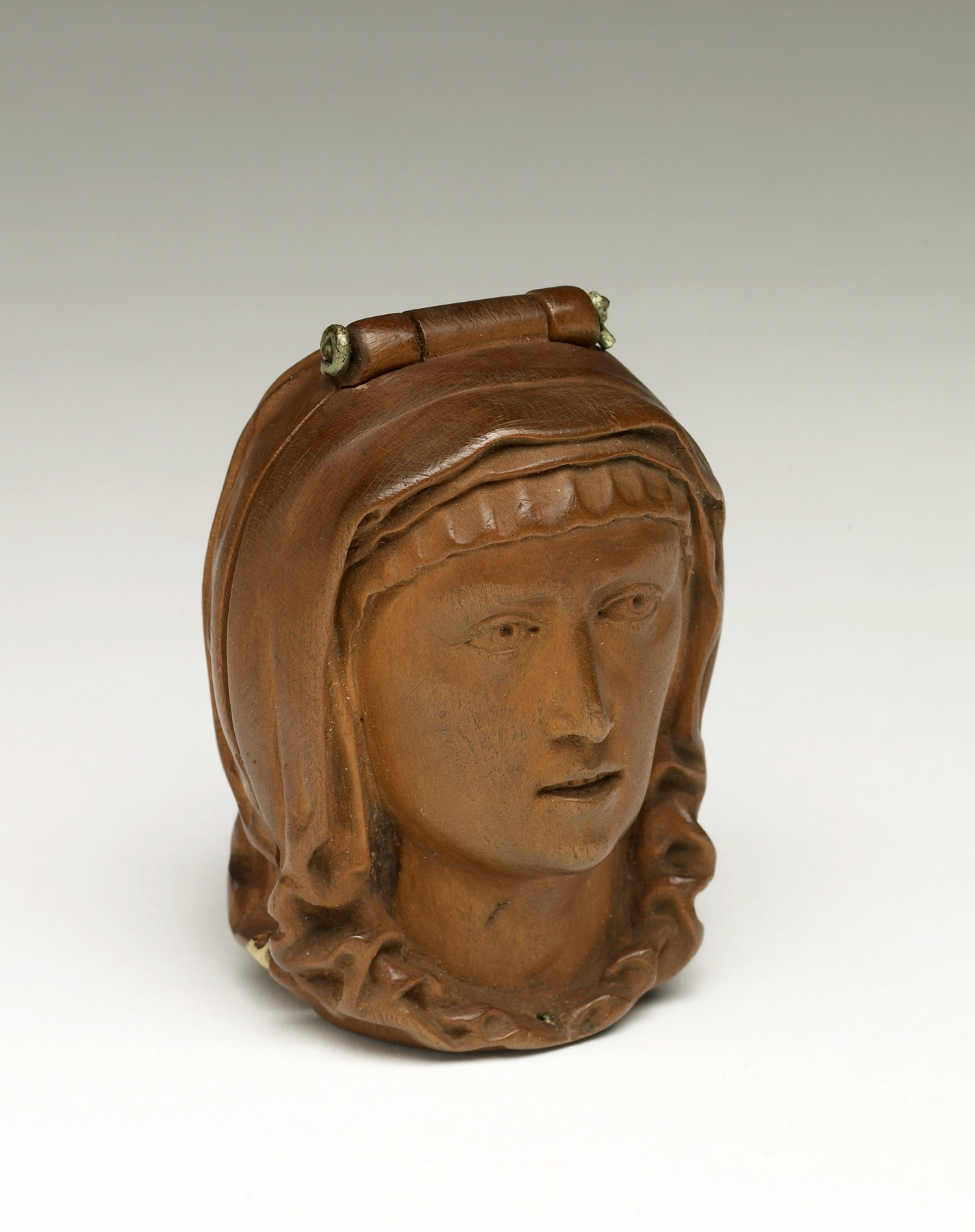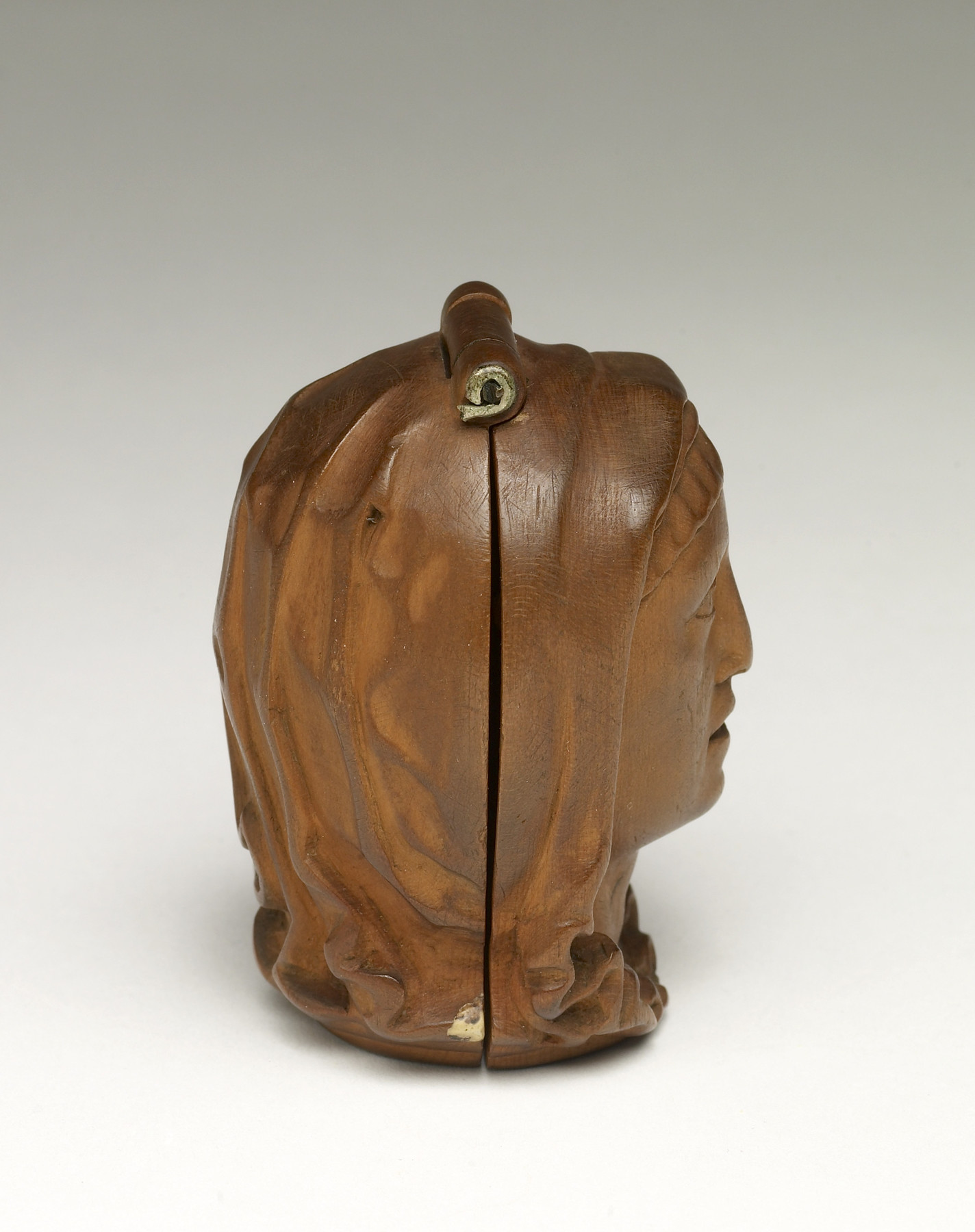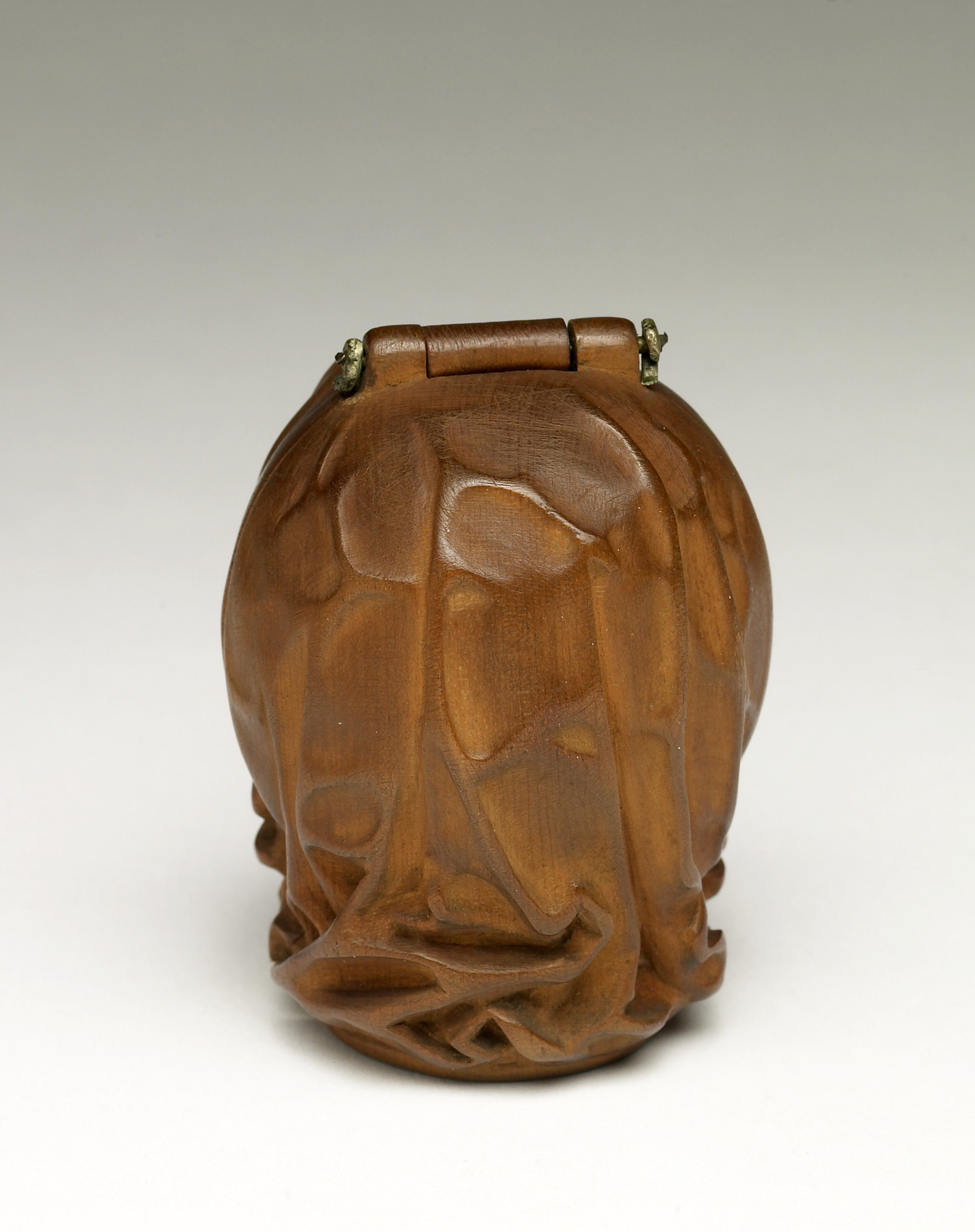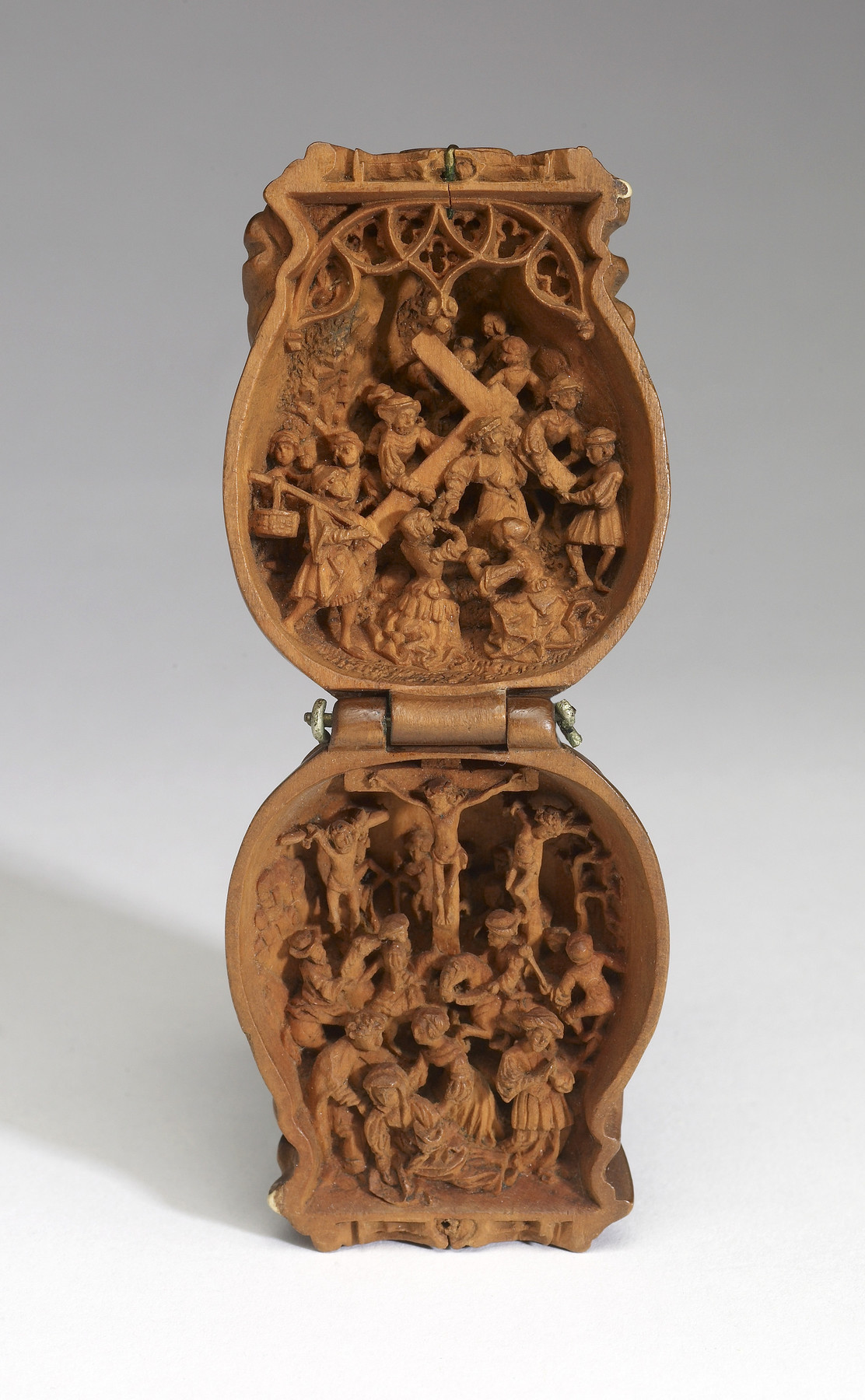Prayer Bead ("Nut") in the Shape of the Head of the Virgin, Opens to Show Crucifixion
(Renaissance Europe )
This prayer nut, possibly intended to function independently rather than as a pendant to a rosary, is carved, from one piece of wood, in the shape of the head of the Virgin Mary with scenes on the inside of the Crucifixion of Christ and the Carrying of the Cross. There is a nearly identical head in the Schnutgen Museum in Cologne which is described as Nuremberg, ca. 1510-20.
Provenance
Provenance (from the French provenir, 'to come from/forth') is the chronology of the ownership, custody, or location of a historical object. Learn more about provenance at the Walters.
William T. or Henry Walters, Baltimore; by bequest to Walters Art Museum, 1931.
Exhibitions
| 2016-2017 | Small Wonders: Gothic Boxwood Miniatures . Art Gallery of Ontario, Toronto. |
| 2009 | Shrunken Treasures: Miniaturization in Books and Art. The Walters Art Museum, Baltimore. |
Conservation
| Date | Description | Narrative |
|---|---|---|
| 1/12/1962 | Treatment | cleaned |
Geographies
Germany, Nuremberg (Place of Origin)
Measurements
Closed H: 2 5/16 × W: 1 3/4 × D: 1 15/16 in. (5.8 × 4.5 × 5 cm); Open H: 4 9/16 × W: 1 3/4 × D: 7/8 in. (11.6 × 4.5 × 2.3 cm)
Credit Line
Acquired by William T. or Henry Walters
Location in Museum
Not on view
Accession Number
In libraries, galleries, museums, and archives, an accession number is a unique identifier assigned to each object in the collection.
In libraries, galleries, museums, and archives, an accession number is a unique identifier assigned to each object in the collection.
61.123










